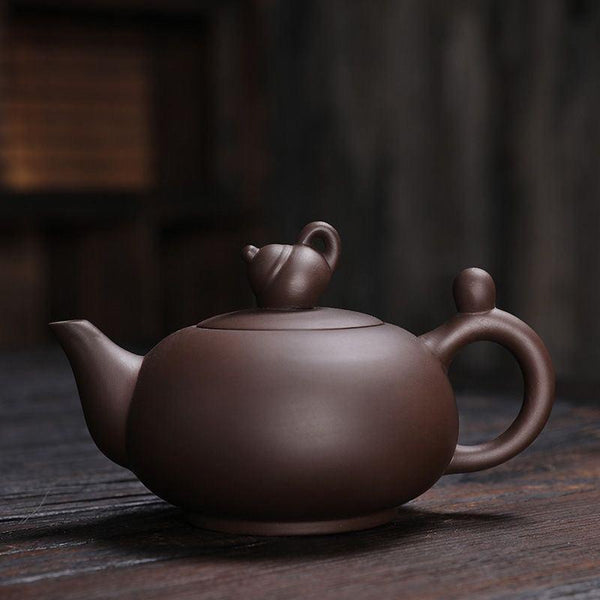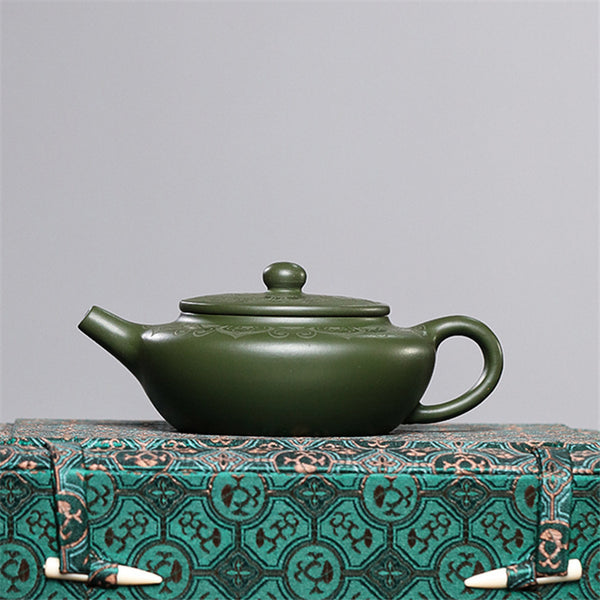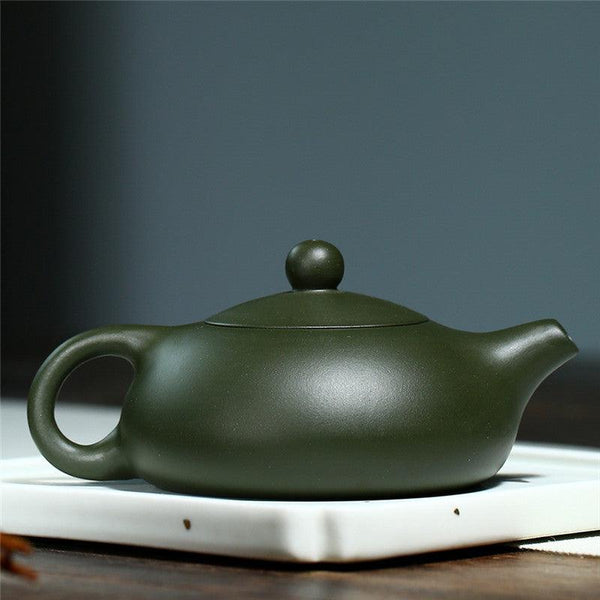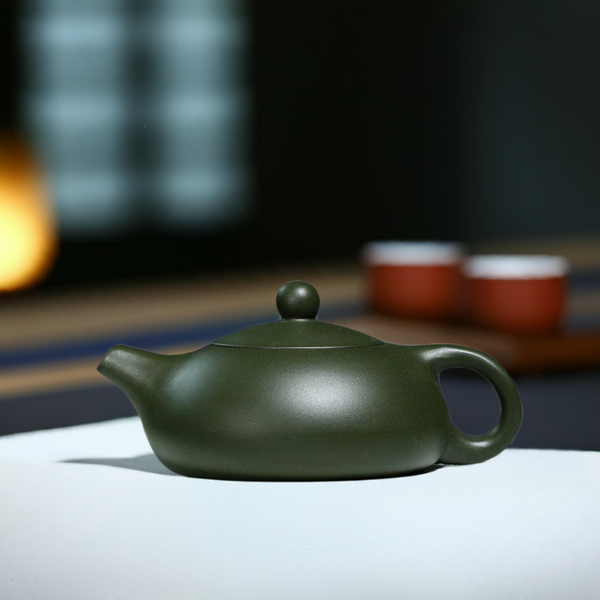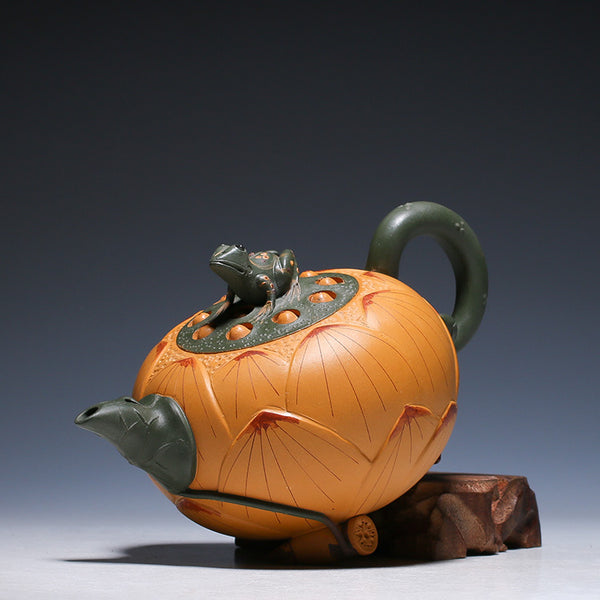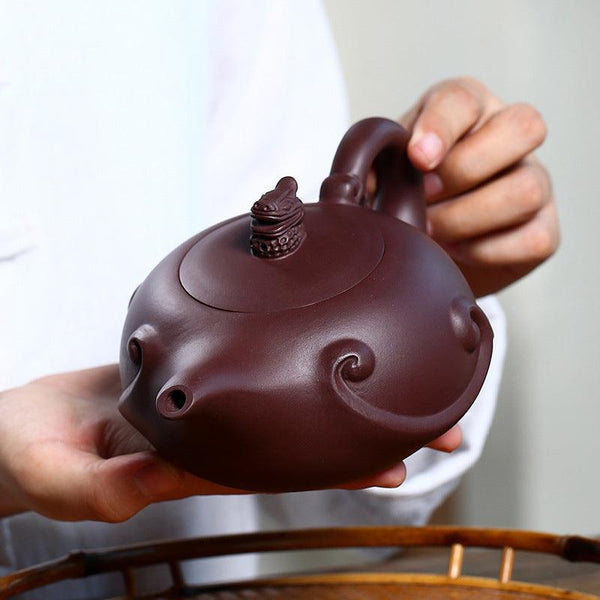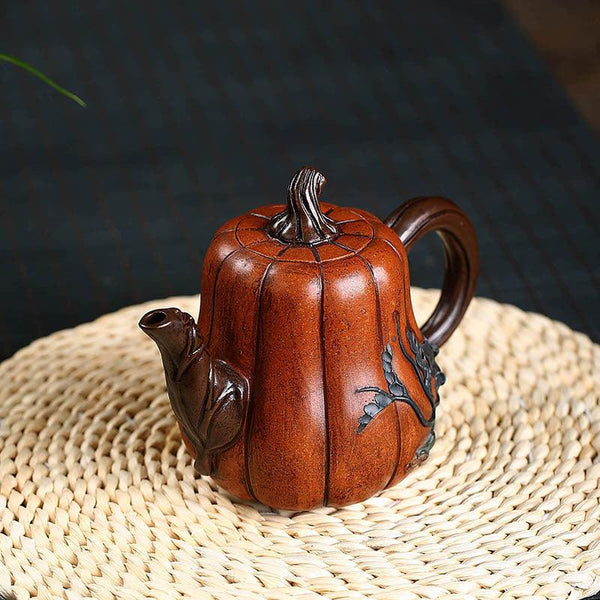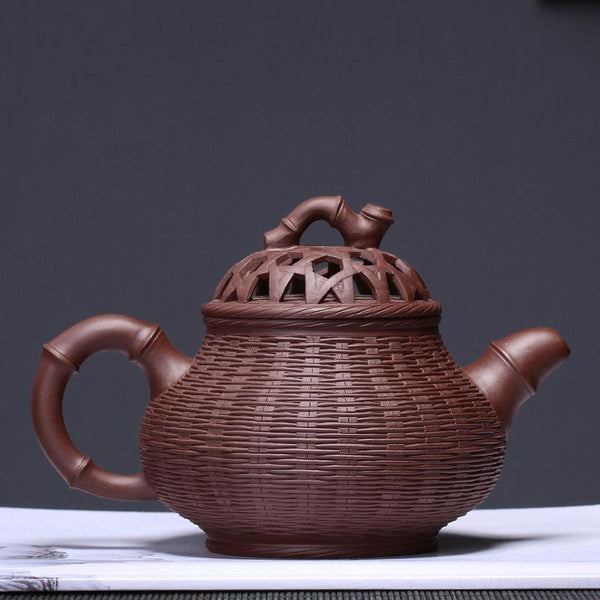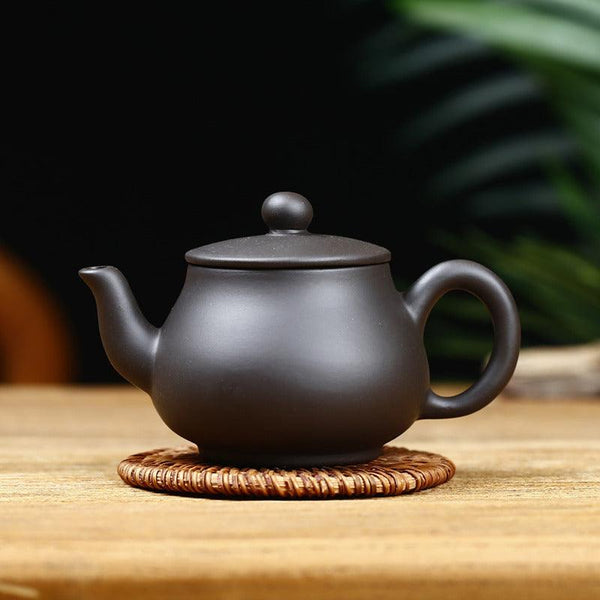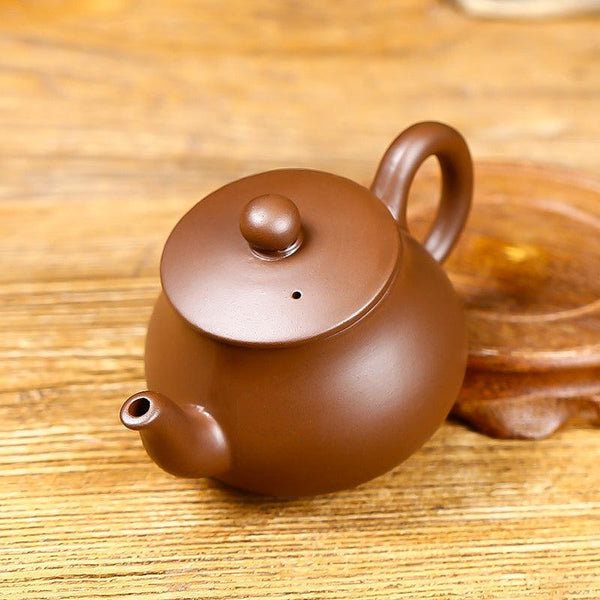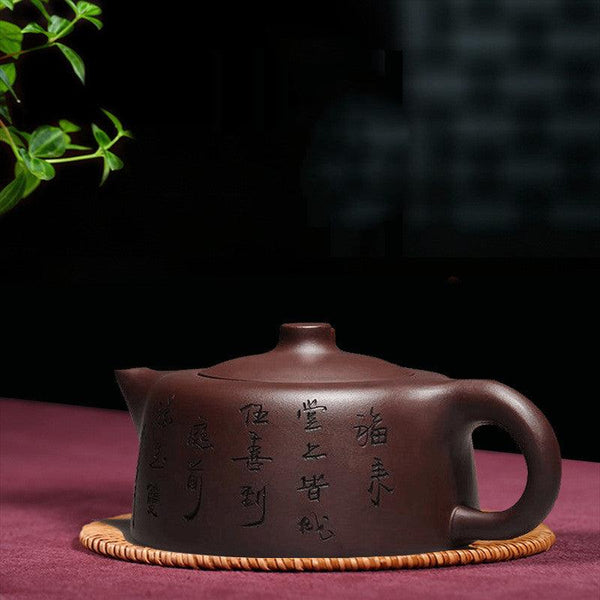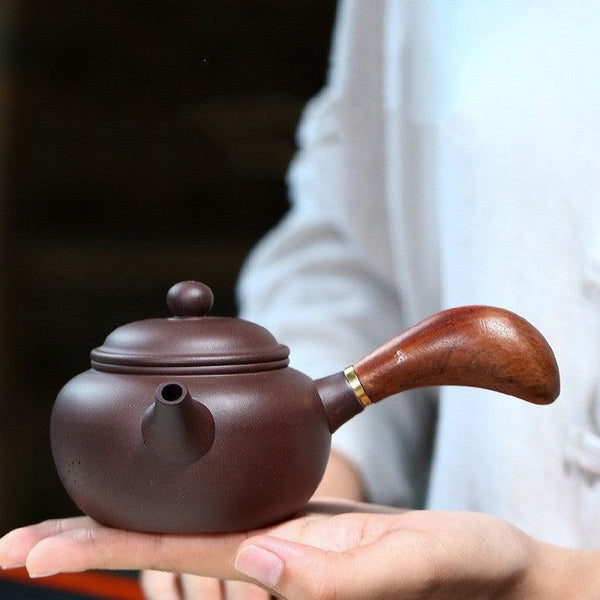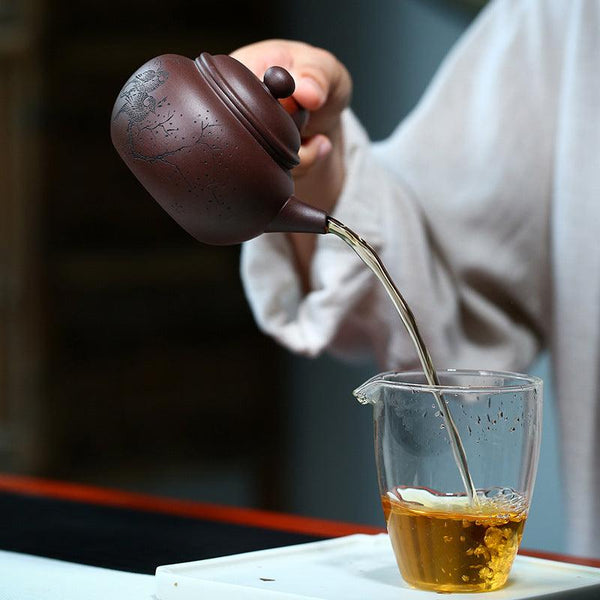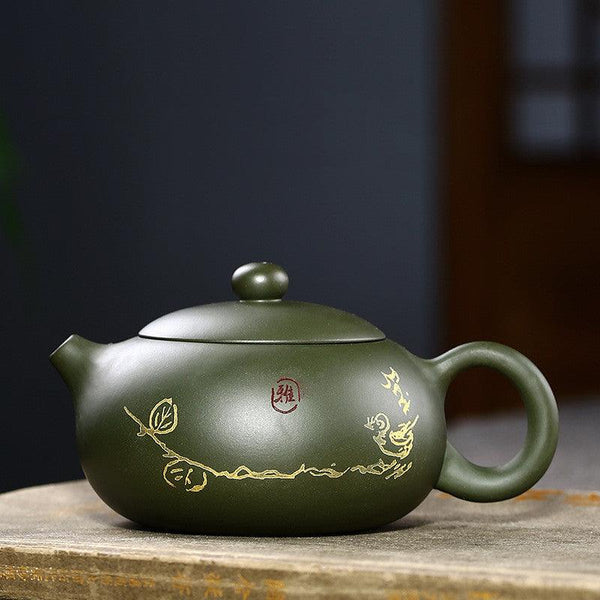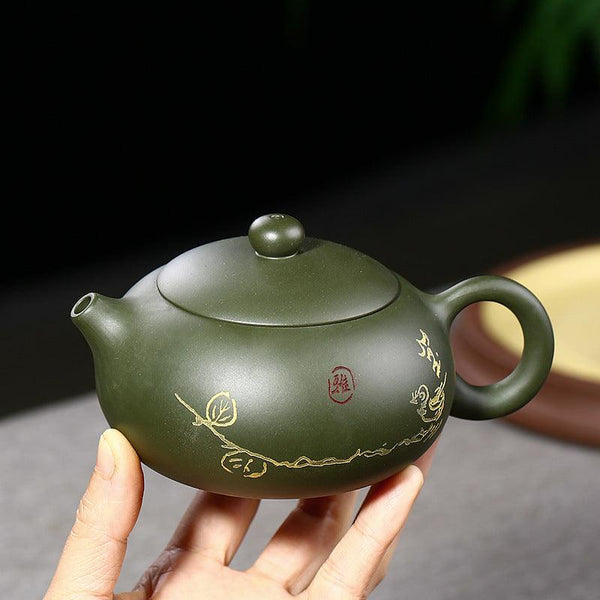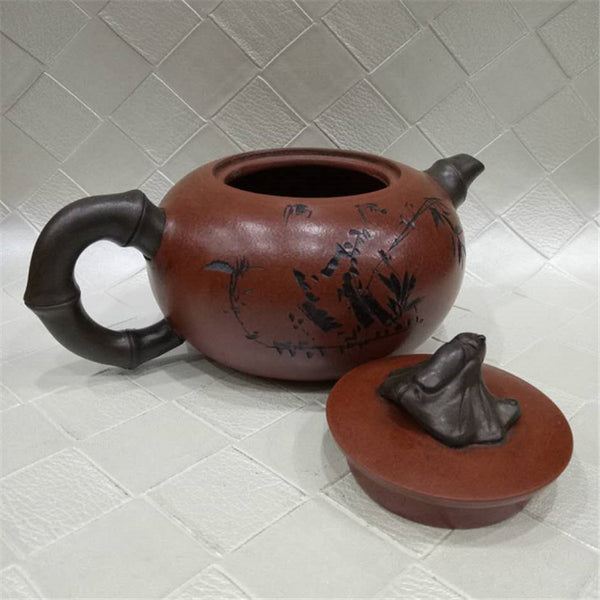Yixing teapots, known for their unique clay and rich cultural history, are crafted with meticulous attention to detail. Let’s explore the traditional methods used to create these beloved teapots.
1. Preparing the Clay
The journey of making a Yixing teapot begins with the selection and preparation of premium clay. Yixing's famous purple clay, or “zisha,” is ideal for teapot making due to its unique properties and wide range of colors.
- Weathering: The clay is exposed to natural elements, allowing it to break down and soften over months. This initial phase is crucial for ensuring the clay's texture is pliable and workable.
- Crushing: The weathered clay is crushed into small pieces using specialized machinery, transforming it into fine particles.
- Screening: The crushed clay is then sifted to achieve a smooth, uniform consistency.
- Blending: Water is added to the fine clay particles, mixed thoroughly until it forms a flexible, moldable clay mass. This clay will serve as the base for the teapot.
2. Crafting the Teapot Body
The next step involves shaping the clay into the body of the teapot.
- Flattening the Clay: Artisans use wooden paddles to pound the clay mass into sheets of uniform thickness, typically between a few millimeters and a centimeter, depending on the teapot’s size and design.
- Forming the Main Body: The clay sheet is wrapped into a cylindrical shape or another desired form. Skilled artisans adjust the shape and smooth the lines for an even, polished surface.
- Attaching the Base: A piece of clay is selected and fitted to the bottom of the teapot, ensuring a tight, gap-free connection with the main body.
3. Crafting the Spout, Handle, and Knob
Each of these elements requires careful handcrafting to ensure balance, functionality, and aesthetics.
- Creating the Spout: A separate piece of clay is shaped into the spout, which can vary from straight to curved. Once formed, it is attached to the teapot body, ensuring a smooth pour.
- Shaping the Handle: Another piece of clay is fashioned into a handle, designed with ergonomic curves to provide a comfortable grip. The handle is attached opposite the spout, carefully balanced to maintain symmetry.
- Adding the Knob: The knob on the lid can take many shapes, from simple circles to intricate designs. The artisan places it on the lid, giving the teapot a finishing touch.
4. Assembly and Refinement
After forming the primary components, the teapot undergoes detailed refinement.
- Lid and Body Fit: The lid is crafted to match the teapot body precisely, ensuring a snug, smooth fit.
- Finishing Touches: Artisans meticulously smooth the teapot’s surface, refining the spout, handle, and lid to ensure seamless lines and polish. This step guarantees the teapot’s visual and tactile quality.
5. Decoration (Optional)
Many Yixing teapots are artistically decorated to enhance their aesthetic appeal.
- Carving: Skilled artisans etch poetry, drawings, or patterns onto the teapot's surface, highlighting its artistry.
- Painting: Some teapots feature painted scenes like landscapes, flowers, or birds, requiring specialized, long-lasting pigments compatible with the clay.
- Inlaying: Occasionally, inlays of gold, silver, or jade are embedded in the teapot, adding a luxurious touch.
6. Firing
The final stage is firing the teapot in a kiln, a process that determines the teapot’s color, texture, and durability.
- Kiln Loading: The clay teapots are arranged in the kiln, spaced for even heat distribution.
- Firing Process: The kiln is heated to around 1100℃ to 1200℃, and the teapots are fired for hours. During this time, the clay undergoes chemical and physical transformations, giving it strength, porosity, and its unique color.
- Cooling and Unloading: Once fired, the kiln is allowed to cool gradually. When the teapots are removed, they exhibit a rich, vivid color and durable texture, ready for use.
Each Yixing teapot represents the heart and skill of its maker, embodying centuries of Chinese heritage and artistic spirit. Understanding this intricate process allows us to appreciate the beauty and craftsmanship behind these timeless teapots even more.


